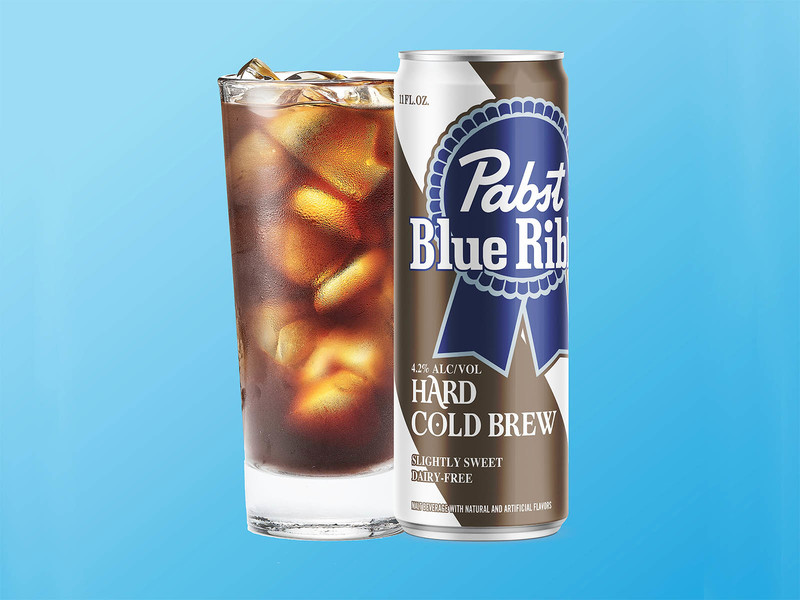"Bar Month" at OnMilwaukee.com is back for another round! The whole month of February, we're serving up intoxicatingly fun articles on bars and clubs -- including guides, the latest trends, rapid bar reviews and more. Grab a designated driver and dive in!
Here's some quick trivia: What does the "B" in the Pabst Brewing Company's logo stand for?
Don't worry if you're stumped. Nine out of 10 people don't have a clue, according to Jim Haertel, president and historic tour guide at Best Place at the Historic Pabst Brewery.
"Most people guess it's for 'beer,' some for 'brewery,' some for 'Bavaria,' and then the fourth most popular choice, for some reason, is 'barley,'" said Haertel. Actually, the illustrious "B" stands for Best and Company, which pays tribute to the brewery's founder, Jacob Best, Sr.
In its 167-year history, the brewery that would become Pabst Brewing Company has contributed more than just the iconic blue ribbon and Tall Boys to society, having had its hand in everything from the creation of Miller to aspects of Milwaukee still seen today.
Best and Company was founded by Best and his four sons in 1844, having moved to Milwaukee from Germany after giving up on an unsuccessful wine venture in the 1830s. The Best family did well considering there were a fair amount of breweries in the city at the time. Charles and Lorenz, two of Jacob's sons, left soon after to start the Plank Road Brewery, which quickly changed hands.
"Lorenz passed away from the cholera epidemic, and Charles, who was distraught over losing his brother, went out of business," said Haertel. "And who ends up buying the Plank Road Brewery but Frederick Miller. So the Pabst Brewery and the Miller Brewery, two of the biggest breweries in the country at one time, were both started by the Best family."
In the meantime, Best and Company rose quickly, becoming the No. 5 brewer in the city, and eventually No. 2 after it changed hands (and names) under Jacob's son Phillip. But it wasn't until Captain Frederick Pabst got involved that Phillip Best Brewing Company really took off.
"He resisted joining the brewery for a couple of years," Haertel said of Pabst, a sea captain who married Phillip Best's daughter. "When he had a particularly bad steamboat ride, he got insurance proceeds and some equity and he ended up buying a 50 percent interest of the Phillip Best Brewing Company."
Phillip Best Brewing, like all the other breweries at the time, was still struggling to find a way to increase their market while still keeping their beer cold and fresh. A solution arrived in the wake of 1871's Great Chicago Fire.
"National shipping was born more out of figuring out how to help Chicago get some beer," said Haertel. "Schlitz and other breweries were sending down railroad cars of water. Pabst was one of the first that said, 'The breweries are decimated; they need beer down there, too.' Somebody suggested putting ice blocks on the railroad cars like they did in the brewery to keep the beer cool in summer. So the light bulb goes off to have a series of icehouses along the railroad tracks."
With Pabst at the helm of a now-national brewing company, the brewery officially changed its name to Pabst Brewing Company in 1889. Four years later in 1893, Chicago did Pabst another favor and delivered the brewery its iconic trademark following a beer competition at the World's Columbian Exposition.
"A woman put little blue ribbons around the necks of the bottles to bring them in to celebrate with the executives when they won, so Pabst had little blue ribbons put around the neck of every bottle they shipped out," said Haertel. "It was called Pabst Select then, but people were asking for the beer with the blue ribbon on it, or the Select blue ribbon beer, or Pabst's blue ribbon beer. Pretty soon it was just called Pabst Blue Ribbon, and they changed the name officially from Pabst Select to Pabst Blue Ribbon." By the time Prohibition came around the brewery was being managed by Pabst's sons, Frederick Jr. and Gustav. Frederick Pabst, Sr. died in 1904. The nationwide ban on alcohol caught breweries off guard, with none of them really taking it seriously until it was too late. However, the Pabst brothers were resourceful and kept the brewery afloat with alternatives.
"Pabst sold a lot of malt extract during Prohibition. Malt extract does not have alcohol in it, but that's what brewers use to make beer. It's sort of a shortcut," said Haertel. "Supposedly the warning label that came with it said 'Whatever you do, don't this, and then this, and then this other thing or it would turn into beer, and that would be illegal.' So if you didn't know how to make beer, the warning label basically provided instructions."
Pabst Brewery contributed to the other side of the law, too.
"In a bit of irony, Pabst rented out a building to Master Lock because they had a big contract to make locks to lock up beer and liquor during Prohibition," said Haertel.
After 1948, Pabst declined in prominence. Its lowest point came with the 1985 buyout by businessman Paul Kalmanovitz of S&P Company in California. His plan to tear down the brewery to make money on a new condo development didn't sit well with people, especially in Milwaukee.
"When he started running things into the ground a lot of people took exception to it and they finally even boycotted Pabst, when you used to see Pabst everywhere," said Haertel. "Pabst was once a premium beer known for quality. Now it's up to like $15 for a 30-pack of cans, but it used to be like $10.99 for 30 cans of Pabst."
Despite the downturn -- or perhaps as a result of it -- the brand made an unlikely upswing.
"Some say that maybe Pabst is still around because of what he did," said Haertel. "It looked like it was just going to fade away, and then all of a sudden there's this up-tick in Portland. So they go out there and they find all these young people drinking Pabst. It became this hipster beer because it's a decent beer at a decent price, and it started to enjoy this resurgence that is still blossoming now."
Pabst's influence today spans both pop culture and everyday life. Known casually as PBR, the brand has seen a wide range of placement in movies, everything from indie hits to blockbusters like Clint Eastwood's "Gran Torino." Contributions made as a result of their old-fashioned shipping roots are also still in use.
"Even before Budweiser had the Clydesdales, Pabst had Percheron horses that they raised and bred to pull the beer wagons through the city," said Haertel. "You needed them to be strong, but you still needed mild-mannered horses that wouldn't get spooked by cars and people bustling around. The police in Milwaukee still use Percheron horses today because they're so good in crowds."
Pabst Brewing Company no longer brews Pabst beer itself, but the company still contracts out production of Pabst and its acquired labels, which include Schlitz, Blatz, Old Style and Old Milwaukee, as well as regional brews like Stroh's and Lone Star.
Though Pabst's brewery days have passed, the company, which was just sold last year to the Connecticut-based C. Dean Metropoulos and Company, has regained a distinguished honor it hasn't held in over 60 years.
"Because Budweiser was bought by InBev of Belgium and MillerCoors is owned by South African Breweries of London, Pabst Brewing Company is now again the number-one American-owned beer," said Haertel.
Contrary to her natural state of being, Renee Lorenz is a total optimist when it comes to Milwaukee. Since beginning her career with OnMilwaukee.com, her occasional forays into the awesomeness that is the Brew City have turned into an overwhelming desire to discover anything and everything that's new, fun or just ... "different."
Expect her random musings to cover both the new and "new-to-her" aspects of Miltown goings-on, in addition to periodically straying completely off-topic, which usually manifests itself in the form of an obscure movie reference.





